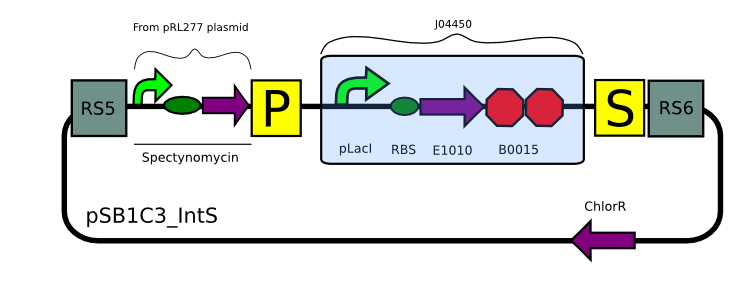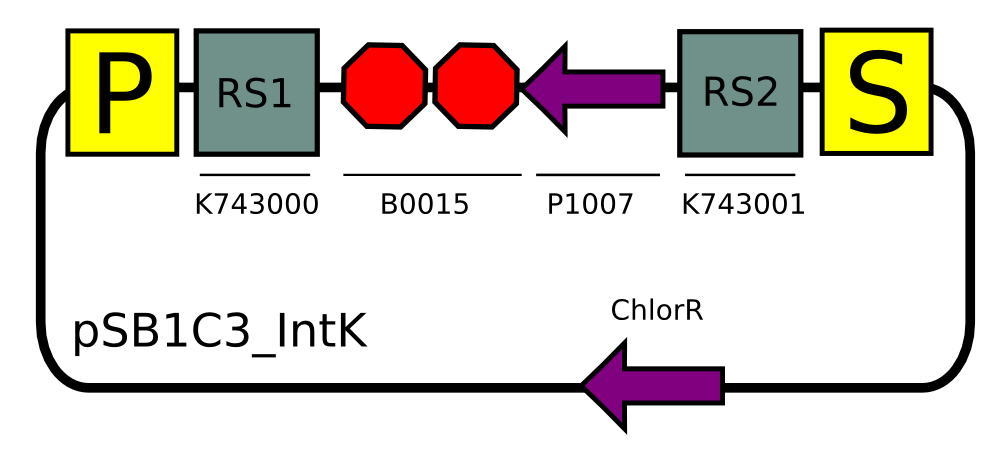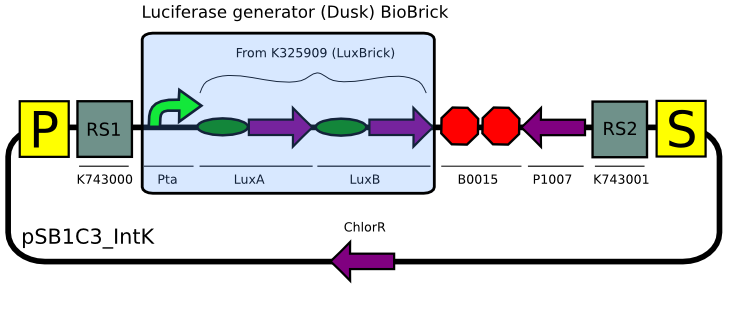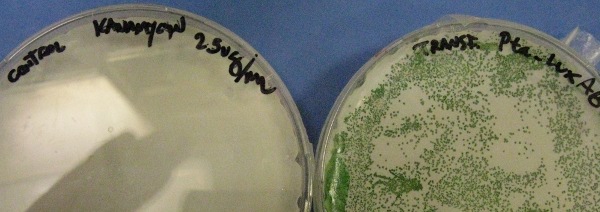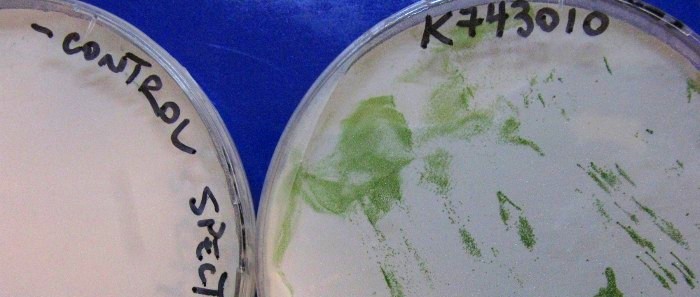Team:UC Chile/Cyanolux/Results short
From 2012.igem.org
(Difference between revisions)
| Line 21: | Line 21: | ||
<br /> | <br /> | ||
<br /> | <br /> | ||
| + | Plasmids were verified by digestion and then corroborated by sequencing. | ||
| + | |||
<h2>Constructs for Synechocystis</h2> | <h2>Constructs for Synechocystis</h2> | ||
| - | Using our plasmid backbones we proceeded to build our constructs for <i>Synechocystis</i>: | + | Using our plasmid backbones as a starting point, we proceeded to build our constructs for <i>Synechocystis</i>: |
[[File:UC_Chile-IntKfullplasmidResult.jpg| 640px]] | [[File:UC_Chile-IntKfullplasmidResult.jpg| 640px]] | ||
<br /> | <br /> | ||
<br /> | <br /> | ||
| - | + | Even though we tried many times (>6) to assemble the substrate production (LuxCDEG) plasmid,we were unable to obtain a correct product. We are currently designing another strategy to build the construct... | |
<br /> | <br /> | ||
| Line 37: | Line 39: | ||
<h2>Transformation</h2> | <h2>Transformation</h2> | ||
| - | We used our plasmid backbones to transform Synechocystis PCC. 6803. | + | We used our plasmid backbones to transform Synechocystis PCC. 6803, to verify that our initial design could indeed integrate into <i>Synechocystis's</i> genome. |
Transformation with pSB1C3_IntK (BBa_K743015): | Transformation with pSB1C3_IntK (BBa_K743015): | ||
| Line 49: | Line 51: | ||
<h2>Verification of constructs</h2> | <h2>Verification of constructs</h2> | ||
| - | We proceeded to | + | We proceeded to verify the integration of the constructs in <i>Synechocystis</i> by doing multiple PCRs to amplify various parts. |
(New image with illustration of verification from outer RS1 and RS2 - October 1X something) | (New image with illustration of verification from outer RS1 and RS2 - October 1X something) | ||
| Line 55: | Line 57: | ||
<h2>Bioluminescence Assays</h2> | <h2>Bioluminescence Assays</h2> | ||
| + | |||
| + | We proceeded to check if our <i>Synechocystis</i> strain with the Luciferase genes did indeed produce light in the prescence of exogenous substrate. | ||
<h3>Bioluminometer</h3> | <h3>Bioluminometer</h3> | ||
| - | - | + | We measured bioluminescence by adding directly the substrate to the cells and measuring light-output in a Luminometer. While we could measure bioluminescence of the positive LuxBrick E.coli controls, no apparent bioluminescence was seen in our <i>Synechocystis</i> cells. This let us to think that the problem might be the size of the promoter, which if not long enough, would not be able to recruit necessary transcription factors for expression. |
<h3>High-sensitive camera</h3> | <h3>High-sensitive camera</h3> | ||
| - | During the Latin America Jamboree, we had a chat with a couple of judges and a student, David Olarte, on how to induce Synechocystis with n-decanal. | + | |
| - | David sent us some work he had done on luminescence assays in cyanobacteria. Following his methods | + | During the Latin America Jamboree, we had a chat with a couple of judges and a student from the Universidad de los Andes, David Olarte, on how to induce Synechocystis with n-decanal. |
| + | |||
| + | David sent us some work he had done on luminescence assays in cyanobacteria. Following his methods we finally were able to see light emittion, confirming prescence of catalytically active luciferase. | ||
| + | |||
<html><center><img src="https://static.igem.org/mediawiki/2012/1/1e/Results.post.colombia.camera.jpg" align="left" width="700"></center></html> | <html><center><img src="https://static.igem.org/mediawiki/2012/1/1e/Results.post.colombia.camera.jpg" align="left" width="700"></center></html> | ||
<br /> | <br /> | ||
Revision as of 07:56, 26 October 2012
 "
"

